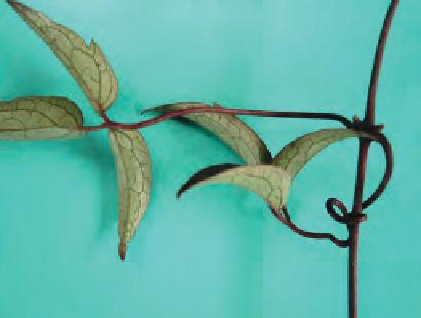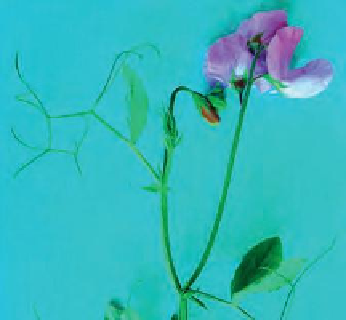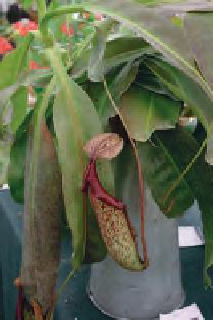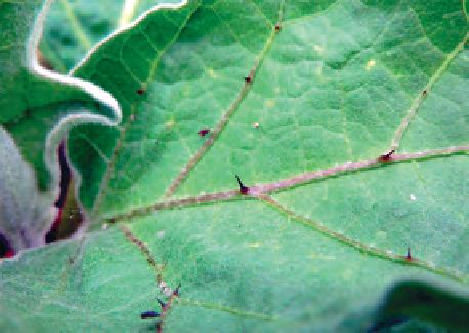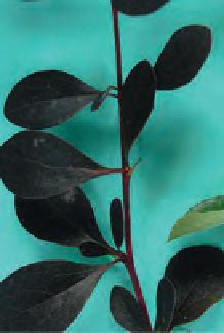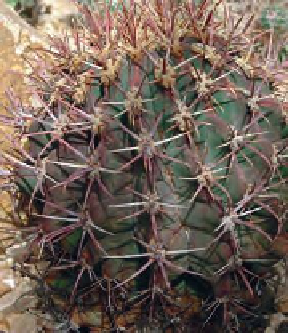Agriculture Reference
In-Depth Information
compound leaf (Figure 7.20b). The monocotyledonous
climber
Smilax china
has tendrils provided by
modified stipules (found at the base of the petiole). In
insectivorous
Nepenthes
spp. (a type of pitcher plant),
a tendril develops from the leaf and then the tip of the
tendril forms the pitcher (Figure 7.20c).
In
Galium aparine
(cleavers), both the leaf and stipules,
borne in a whorl, bear
prickles
that allow the weed
to sprawl over other plant species acting as grappling
hooks. Leaves may also have a protective function,
notably against predation, as in the aloes and, as
shown in Figure 7.20d, where some hairs on aubergine
leaves have become tiny
spines
. On a larger scale, the
spines of
Berberis
spp. are also adaptations of leaves
(Figure 7.20e). In many desert species, the leaves are
transformed into spines, which have the additional
advantage of reducing water loss, and the function of
photosynthesis is taken over by the stem (Figure 7.20f).
In a
bulb
(e.g.
Narcissus
,
Figure 7.21) the outer papery
scale leaves enclose succulent, light-coloured scale
leaves containing all the food and moisture necessary
for the bulb's emergence making this a perennating
organ. The scales are packed densely together around
the terminal bud towards the base of the stem,
ends of the tendrils which secrete a sticky
substance enabling them to attach tightly to
smooth surfaces such as walls. In
Passiflora
spp.
(passion flowers), a group of axillary buds is
found at the base of each petiole, one of which
forms a tendril, one or two flower buds and
another a vegetative shoot making it difficult
to decide what plant part the tendril actually
develops from (Figure 7.19).
Leaf adaptations
While remaining essentially the organ of
photosynthesis, the leaf takes on other functions
in some species. The most notable of these are
modifications for climbing which enable the plant
to compete effectively with other plants for light,
therefore increasing its photosynthetic capacity. Leaf
tendrils
may be formed from slender extensions
of the leaf, and are of three types. In
Clematis
spp.,
the leaf petiole curls round the stems of other plants
or garden structures to support the climber (Figure
7.20a), while
Lathyrus odoratus
(sweet pea) holds
on with tendrils modified from the end-leaflets of the
(a)
(b)
(c)
(d)
(e)
(f)
Figure 7.20
Some leaf adaptations: (a) petiole tendrils of
Clematis
; (b) leafl et tendrils of sweet pea; (c) pitcher
developed from a leaf tendril in
Nepenthes;
(d) spines on an aubergine leaf; (e) spines of
Berberis
;
(f) spines of
the cactus
Ferrocactus emoryi
subsp.
emoryi

